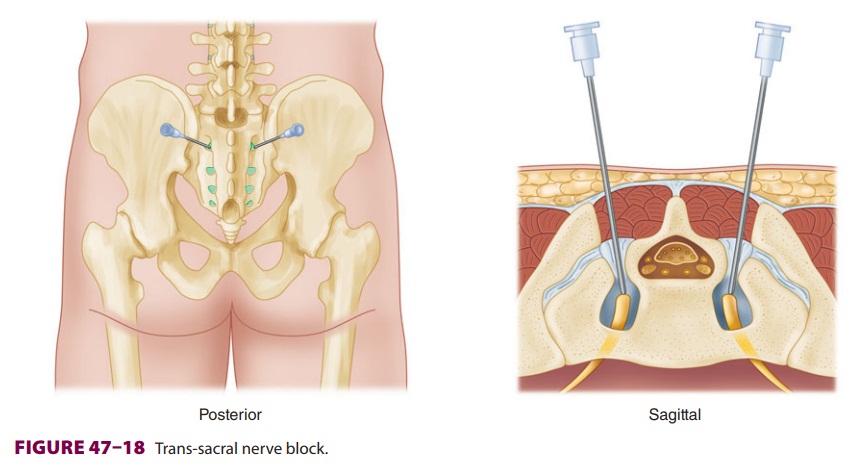Chapter: Clinical Anesthesiology: Regional Anesthesia & Pain Management: Chronic Pain Management
Trans-Sacral Nerve Block

Trans-Sacral Nerve Block
A. Indications
This technique is useful in the diagnosis and treat-ment of pelvic and
perineal pain. In addition, block-ade of the S1 spinal root can help define its
role in back pain.
B. Anatomy
The five paired sacral spinal nerves and one pair of coccygeal nerves
descend in the sacral canal. Each nerve then travels through its respective
interver-tebral foramen. The S5 and coccygeal nerves exit through the sacral
hiatus.
C. Technique
While the patient is prone, the sacral
foramina are identified with a needle along a line drawn 1.5 cm medial to the
posterior superior iliac spine and 1.5 cm

lateral to the ipsilateral sacral cornu (Figure 47–18). Correct
positioning requires entry of the needle into the posterior sacral foramen and
usually produces paresthesias. The S1 nerve root is usually 1.5 cm above the
level of the posterior superior iliac spine along this imaginary line. Blockade
of the S5 and coccygeal nerves can be accomplished by injection at the sacral
hiatus.
D. Complications
Complications are rare but include nerve damage and intravascular
injection.
Related Topics